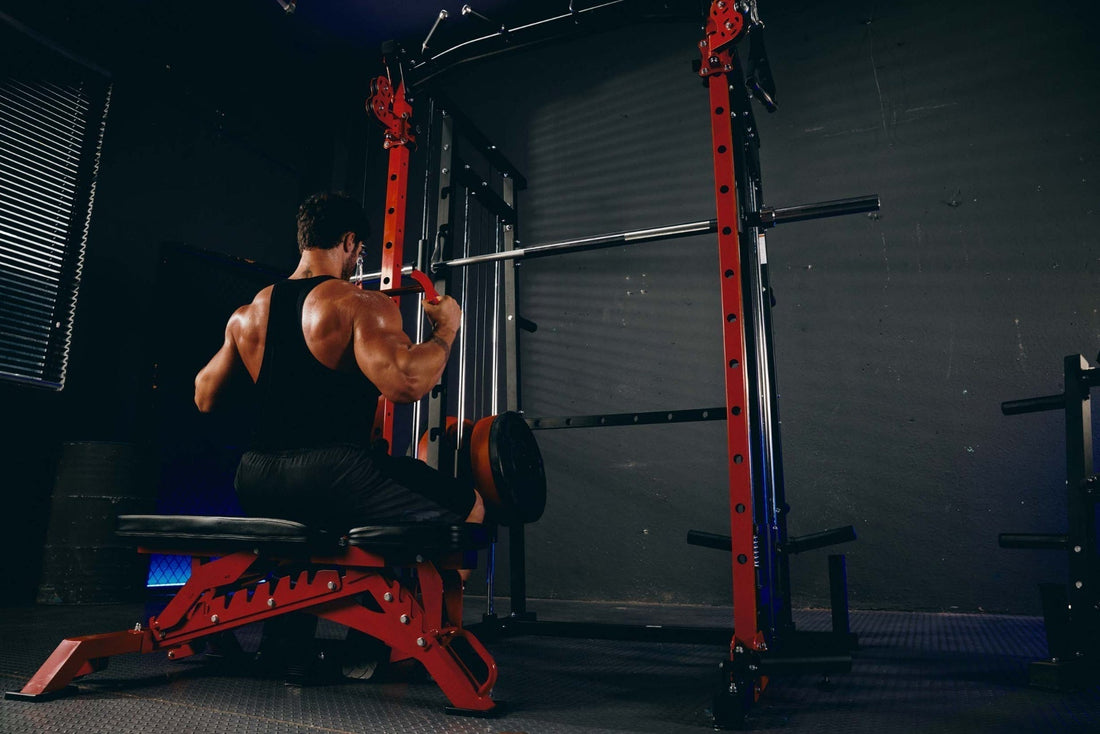
Is close-grip or wide-grip better for lat pulldown?
Let's learn how wide-grip lat pulldown shapes your V-taper and how close-grip builds thickness and settle this gym debate once and for all. That burning question you've had mid-set when staring at the pulldown station - "Should my hands be closer or wider?" - isn't about right vs. wrong. It's about what's right for YOUR back's unique structure, mobility, and development needs.
Like your fingerprint, your ideal grip width depends on factors like shoulder anatomy, muscle imbalances, and whether you're chasing width (wide grip) or thickness (close grip). At Major Fitness, we've found that most lifters benefit from cycling through both grips - it's not about picking one and sticking with it forever, but instead strategically using each variation to attack your back from all angles.
Here are some breakdowns and tips that help you move beyond guesswork and 'bro science.
The Grip War: Breaking Down the Battle
Wide-Grip = Your "Wingspan Builder"
- Best for: That coveted V-taper
- Feels like: Stretching a rubber band across your outer back
- Pro tip: Go 1.5x shoulder width – any wider and most lifters cheat with forward lean
Close-Grip = Your "Thickness Weapon"
- Best for: Density that shows from the side
- Feels like: Zipping up a tight jacket with your lats
- Pro tip: Use a neutral (palms-facing) grip to spare your shoulders
Execution Masterclass
Wide-Grip Pitfalls (And Fixes)
✖️ Mistake: Letting the bar pull your shoulders forward
💡 Fix: Pretend you’re crushing oranges in your armpits mid-rep
Close-Grip Secrets
✖️ Mistake: Turning it into a bicep curl
💡 Fix: Lead with your elbows, “digging into back pockets”

The Hybrid Solution
This strategic combination leverages the unique advantages of both wide-grip vs close-grip lat pulldown techniques. The wide-grip pulldown creates superior stretch across the upper back, while the close-grip lat pulldown allows for heavier loading and greater lower lat activation. By finishing with unilateral work, you address the common strength discrepancies that narrow-grip lat pulldown movements often reveal. Whether your goal is improving your wide lat pulldown performance or building the muscles worked in close-grip pulldown variations, this three-phase approach delivers comprehensive development.
Pro Tip: Rotate between pronated (overhand) and neutral grips every 4 weeks to prevent adaptation.
Matt's favorite protocol for balanced development:
1. Wide-Grip – 3x12 (light) as warm-up
2. Close-Grip – 4x8 (heavy) for growth
3. 1-Arm Variation – 2x15 per side to fix imbalances
What Our Training Logs Reveal
After analyzing our training:
| Metric | Wide Grip (1.5x Shoulder) | Close Grip (Shoulder-Width) |
| Avg. Weight Lifted | 20% less than close grip | Higher load capacity |
| Muscle Soreness Location | Upper back/shoulders | Lower lats/arms |
| Form Breakdown Rate | 42% (early fatigue) | 18% (easier to control) |
"Switching to close grip for 8 weeks finally felt my lats working instead of my arms." – Matt, Major Fitness Product Manager
Try this next back day, and you’ll immediately feel the difference.
FAQ: Your Burning Grip Questions, Answered
1. Is close-grip or wide-grip better for lat pulldown?
-
It depends on your goal! Wide for width, close for thickness.
2. Is close-grip better than wide-grip overall?
-
No—they serve different purposes. Rotate both for balanced development.
3. Should I do wide-grip or close-grip pull-ups?
-
Wide grip = more back width
-
Close grip = more biceps & lower lats
4. Is wide-grip better than close-grip for upright rows?
-
No! Upright rows are risky for shoulders—if you must, use a close grip to reduce strain.
5. Do wide-grip pull-ups work more biceps than narrow-grip?
-
No! Close grip activates biceps more. Wide-grip shifts focus to the back.
6. Which is better for you—wide or close-grip pull-ups?
-
Both! Wide for back width, close for strength & biceps.
7. Is close-grip better than wide-grip for back exercises?
-
Not "better," just different. Close-grip builds thickness, wide-grip builds width.




















